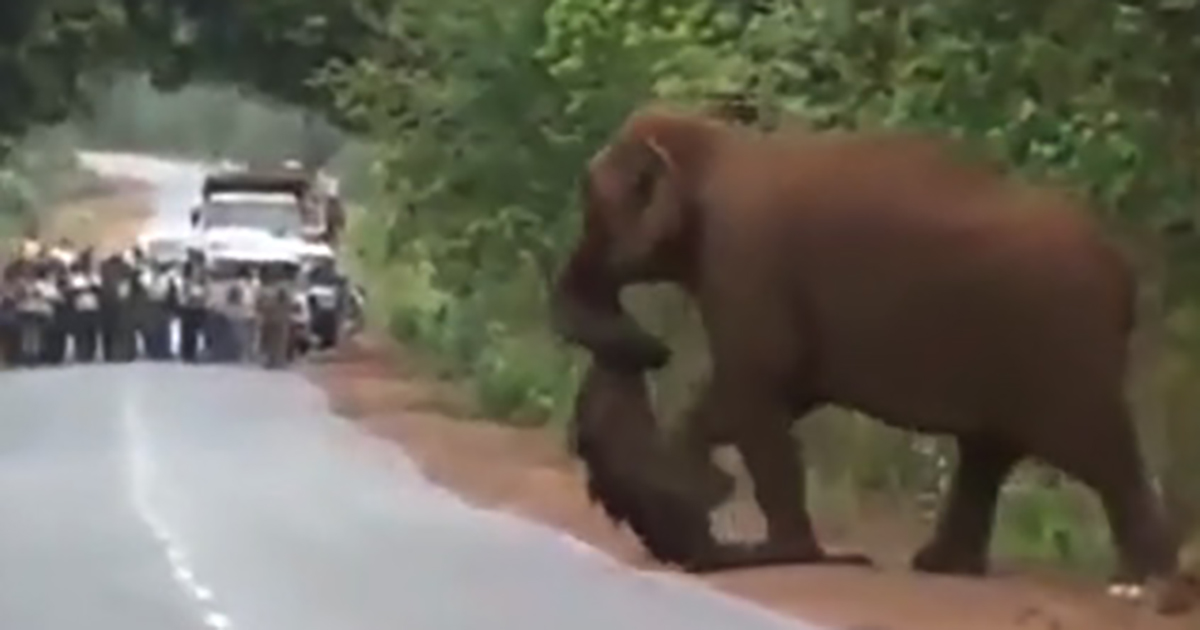In a deeply moving moment that’s swept across social media platforms and touched hearts worldwide, Indian Forest Service officer Parveen Kaswan shared a rare and emotional video that captures elephants appearing to mourn the loss of one of their own. The video, posted last Friday, offers a powerful and intimate glimpse into the emotional world of these majestic creatures—prompting a wave of astonishment, sorrow, and reflection among viewers.
The clip, which has since gone viral, begins with a heart-wrenching scene that feels almost cinematic in its gravity. From behind a dense patch of forest, an adult elephant slowly emerges, tenderly carrying the lifeless body of a baby elephant curled gently in its trunk. The weight of grief is almost palpable as the adult elephant, moving with deliberate care, places the small, still form on the ground. For a moment, there is silence—an eerie calm that amplifies the intensity of the scene.
As the adult stands guard over the calf, the atmosphere shifts. One by one, more elephants arrive, walking in a straight, somber line, their pace slow and respectful. The scene resembles a sacred procession, as if the herd understands the gravity of the moment and is participating in a collective ritual of mourning. Each elephant pauses, joining the silent circle that forms around the fallen baby, their presence forming what looks like a protective shield of empathy and sorrow.
Then comes the most haunting gesture of all. The original elephant—possibly the mother—gently lifts the calf once more, as if unwilling to let go. Holding the baby with a kind of grace that seems impossibly human, the elephant begins to move forward again. The rest of the herd follows in quiet formation, their movements synchronized as if bound by an invisible thread of shared grief. It is a moment that speaks volumes, not in words, but in silence and solidarity.
Though elephants are wild animals, they have long been known to exhibit behaviors that suggest profound emotional intelligence. Biologists and animal behaviorists have documented instances of elephants showing signs of mourning: standing vigil over the dead, touching and caressing remains with their trunks, and even returning to the bones of deceased herd members years later. What makes this particular scene so powerful is not just the rarity of such footage, but the raw emotion it seems to convey—a depth of feeling that resonates deeply with human observers.
Kaswan’s video has triggered an outpouring of responses from people all over the world. Many expressed disbelief, others empathy, and countless users shared personal reflections on grief and loss. For some, the footage served as a reminder of the emotional lives of animals—lives often overlooked or underestimated in a world that tends to place humans at the center of emotional experience. For others, it was a call to recognize the deep connections that exist across species, and the need to treat animals not just as beings to observe, but as fellow travelers capable of love, pain, and remembrance.
In a time when the natural world often feels distant or damaged by human activity, this powerful moment reminds us of something ancient and sacred: that compassion, connection, and mourning are not uniquely human experiences. They are part of a shared emotional tapestry that links all living beings.
The elephants, in their quiet and dignified mourning, offered a lesson in grace—and in doing so, touched countless souls across the globe.
